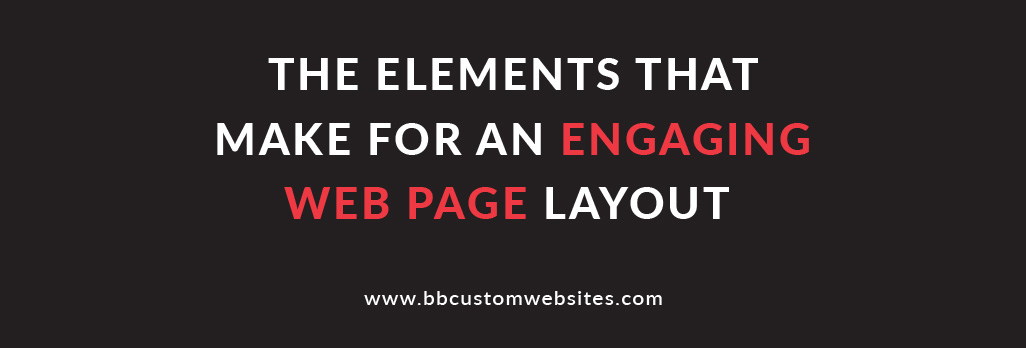What Makes an Engaging Web Page Layout

Do you know why certain websites capture your attention and why others don’t?
I’m sure you can relate to the experience of visiting a website and quickly losing interest and wanting to leave it. I’ve visited countless websites where I felt this way. The experience is unenjoyable, although you may not be able to identify exactly why it is that way.
So much of this has to do with the design elements of a website. The design elements will truly make or break a website’s effectiveness and either engage users, providing them with a pleasant online experience, or turn users away, causing them confusion and/or mistrust.
The best and most effective design elements of a website are those that go unnoticed by the user and provide them with a smooth and intuitive online experience. Poor design elements that are often the cause for user confusion and lack of engagement on websites include complex layouts, unclear site navigation, disorganized content, small print, and the absence of color and images.
So what exactly are the design elements that make for an engaging web page layout? The following is a list of four elements that contribute to this.
1. A Simple Design
Simplicity has become a basic principle of modern website design. The most effective websites today contain a simple concept, where users understand the company’s mission and brand message instantly by taking a quick look at their site. A simple design of your website that is clean and free of unnecessary clutter and elements will ensure that your website is easily functional and loadable across a variety of devices and provides a smooth user experience.
2. Quick and Easy Navigational Features and Clear Calls to Action
The users of your website should not have to waste time trying to figure out how to navigate your site, use the navigational menu and buttons, and get the information that they need from different pages. The site navigation should be instantly clear and visible, following a straightforward and standard design, and intuitive so that users don’t even have to think about it.
Call to action buttons that invite users to take a buying decision or other action should be clear and designed in such a way that they stand out from the rest of the design elements. Keeping them simple with short and direct text will contribute to their effectiveness in reaching users and capturing their attention, without adding any unnecessary distraction to the design.
3. Eye-Catching Content
It has been shown that users mostly do not like to visit a website if they have to go through a lot of text-based content. They look for visual elements that are interesting and can educate them on an issue. Thus your website design should include relevant and eye-catching images and videos, the two visual elements that are the most effective in keeping users engaged on a website.
Informative text content is important to include too, but should be arranged in such a way as to not overwhelm users and clutter the web pages. An engaging web page will break up text so that it is easy for users to read, balance it with visual content and include an overall good mix of text and images.
4. Good Use of White Space, Colors and Fonts
These three elements are crucial in creating aesthetically beautiful websites.
Effectively using white space means that a website design incorporates empty space on web pages where there is no text or images. The intention behind this is to make the design easy on the eyes of users and to ensure better readability of text, so that information can be quickly and easily read.
The right choice of colors on a website is immensely important and should serve to catch the attention of users. The color palette should be intentionally chosen to convey your company’s brand message, with the proper hues, tints and shades being selected to flow together and make the entire design pleasing and cohesive.
A clean selection of fonts for your website that matches your brand is equally essential. The fonts used should be visually balanced, easy to read, and complementary, so that users can read the website text clearly and there is consistency throughout the design.
Incorporating these different elements into your web pages will ensure that your website engages users, captures their attention, and keeps them on the site so that they want to read more about you and learn about your services!
If you’d like to know more about what makes an engaging web page layout and the principles of good website design, contact us today.
Back to Blog
